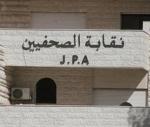You are here
Archaeologist calls for establishment of archaeological park to boost tourism
By Saeb Rawashdeh - May 28,2023 - Last updated at May 28,2023

Ain Ghazal figurines displayed at the Museum of Jordanian Heritage in Irbid (Photo of Saeb Rawashdeh)
AMMAN — The number of archaeological fieldwork projects in Jordan has increased in the last several decades, noted Professor Emeritus Zeidan Kafafi on Wednesday at the 3rd International Conference of Tourism Management and Conservation in Amman.
“In order to encourage international tourism, efforts have been devoted to conserve, preserve and present archaeological sites in Jordan,” Kafafi said during his presentation, “Amman National Archaeological Park: A Proposal”.
Archaeology is a cornerstone of tourism, Kafafi remarked, calling for cultural tourism to be marketed as part of the typical tourism package.
The general public believes that archaeological sites in Amman are concentrated around the Amman Citadel, the Roman Theatre and the Roman Nymphaeum, the professor said.
“As a matter of fact, this isn’t completely true. The discovery of the Neolithic village Ain Ghazal [near Marka Shamalia] invited archaeologists to argue that the site must also be included as a tourist destination,” Kafafi highlighted.
However, there is little that can be termed attractive to tourists at the Ain Ghazal site at present, and it is clear that considerable effort will be necessary to prepare Ain Ghazal as a tourist destination, the professor said.
For Kafafi, a campaign for the site’s enhancement, including signage and the construction of a small museum or visitor’s centre, would be “enough” to initially attract visitors.
“Paying a visit to Amman Citadel, visitors can see only the classical and Islamic periods, but nothing dated to the Bronze and Iron Ages, although they are available there,” Kafafi highlighted.
Amman is “very much qualified” to be a long-stay destination for groups of tourists, he added.
“It has been settled from the prehistoric times up to more recent period; Amman has a diversity of Neolithic villages, as a Bronze Age city, the capital of the Ammon Kingdom, Greco-Roman plan city, Byzantine churches and Dar Amara,” Kafafi said.
According to the veteran archaeologist, the Ammonite period should be highlighted by upgrading the Ammonite settlements inside the city of Amman for tourism purposes, such as Khirbats (ruins) and towers.
“Due to the expansion of the capital Amman over the last few decades, new roads and new structures were constructed, demolishing of many archaeological sites,” he elaborated.
Kafafi argues that to conserve and present Amman’s archaeological sites, a governmental plan for establishing a “National Amman Archaeological Park”, should be “seriously taken into consideration”.
“The spectacular statues from Ain Ghazal have developed a widespread interest in Jordan’s archaeology among local and foreign audiences, and this interest can be used to the advantage of Jordan’s tourist industry,” he added.
Related Articles
AMMAN — Global search engine giant Google celebrated the 40th anniversary of the discovery of the 9,200-year-old Ain Ghazal statues, which a
AMMAN — Community archaeology, which seeks to empower and involve local communities in the protection and preservation of their shared past,
This August 14, I visited my son, a doctor working for a hospital in Paderborn, Germany. On a weekend we visited the Hercules Monument















